Content marketing has certain fundamentals — sure — but as a SaaS company, you need to step beyond the basics to stay ahead of the competition.
After all, it can be a highly technical vertical, especially if your product is business-facing. Your audience isn’t the average e-commerce customer, and so your content ideas, formats, and overall execution shouldn’t follow a B2C e-commerce strategy.
What makes us equipped to speak to content marketing in this vertical, specifically? Peruse our work in the SaaS space to date, including how we’ve skyrocketed traffic for respected names in SaaS like Panda Security, Secureframe, and Zapier.
In this guide, we’ll unpack what makes SaaS content marketing unique, its importance, and several key strategies for doing it right.
What Is SaaS Content Marketing (+ What Makes It Special)?
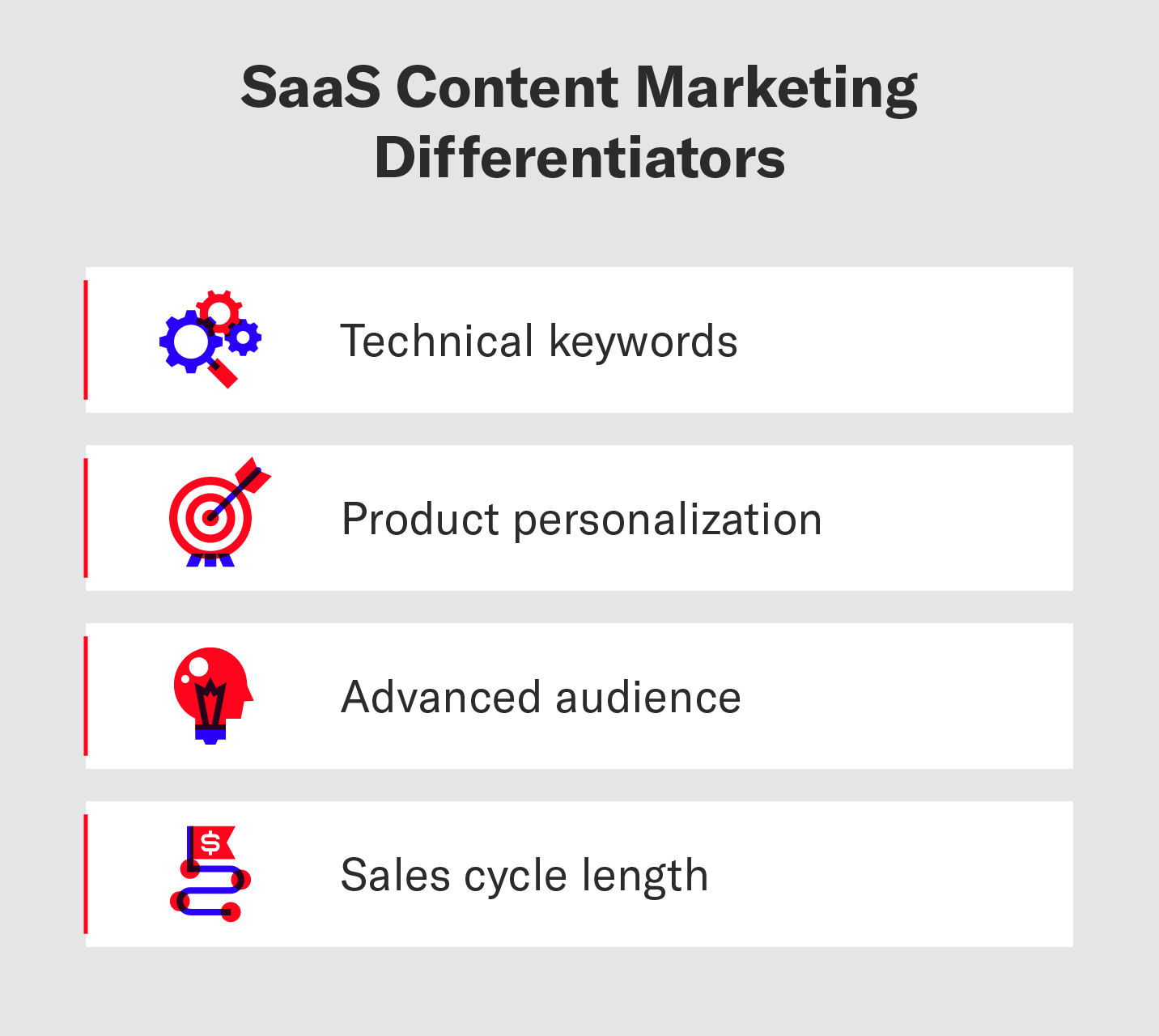
SaaS content marketing is a SaaS company’s strategic production and distribution of helpful content to capture their target audience’s attention and prompt them to action. Typically, that action involves newsletter sign-ups, gated asset consumption, software trials, or plan upgrades.
So, what do SaaS companies do differently when it comes to content marketing?
Just as you wouldn’t pitch AI to OpenAI, a business intelligence software provider shouldn’t create a beginner’s guide to data visualizations for their audience of data scientists.
Sure, the general content marketing tips you’d read on Search Engine Journal matter. But if you don’t consider what makes your SaaS audience unique and how to appropriately reach them, you’ll be left in HubSpot’s dust (and there’s a lot of dust to be left in).
Here are a few other distinctions about SaaS content marketing:
Keyword Complexity
“Agile backlog grooming,” “neural network backpropagation,” “regtech” — it’s hard to avoid complex industry jargon in SaaS, and that can make keyword research and content writing challenging. You may have to turn outside the SERP to thought leaders, white papers, and other technical resources to authoritatively explore certain topics in your niche.
Personalization
Vitamins are vitamins, pajamas are pajamas, and project management software can be a million different things depending on the team or individual using it. For many SaaS companies, demos are necessary to demonstrate how the user can customize an app to their team’s unique needs.
Content marketing should direct users toward learning more while preaching how to adapt software to meet the unique needs of your audience.
Audience
If you’re a B2B company in SaaS, you aren’t speaking to casual shoppers — your audience consists of executives, business owners, and other decision-makers. They’re already informed about their industry and are hungry for novel, actionable insights. You have to meet them where they’re at with your content to come across as authoritative and trustworthy.
Prolonged Sales Cycles
The average SaaS sales cycle length is 84 days. After all, businesses can rarely commit to a software solution on the fly — especially when that solution demands a high financial commitment and would change how teams operate.
B2B SaaS companies need to be ready for a slow and steady sales process that requires getting a lot of stakeholders on board. In content marketing, that means nurturing leads carefully and strategically through content.
Why SaaS Companies Need Content Marketing
The ROI of content marketing for any industry is unmistakable, and this doesn’t exclude SaaS. Just look at how we helped Panda Security achieve a 5-year traffic value total of $5,179,356 through strategic content marketing.
But what makes it particularly necessary for SaaS companies? There are a couple of reasons why helpful content matters greatly in this space: cost
and complexity.
Cost
There’s no denying that software can get expensive — especially software designed for large businesses.
Before committing to invest hundreds, if not thousands, of dollars regularly, prospective customers need to feel confident that your solution is the right one for them.
Complexity
In the same vein, software can be complex.
How can you expect to generate loyal customers if you don’t provide them with educational resources exploring your product and its use cases?
If that’s not enough to convince you, just look at the competition. SaaS companies everywhere rely heavily on organic search, and many have succeeded by becoming thought leaders in their niche.
Technology is constantly evolving, including technology that impacts your product. Think about how rapidly artificial intelligence (AI) took the world by storm, opening up a world of opportunity for software companies to become thought leaders in their specific niche of AI use cases.
This gives you influence and authority, resulting in more traffic, more backlinks, and more revenue.
How To Build a SaaS Content Marketing Strategy in 9 Steps
There’s no room for cutting corners in SaaS content marketing. Here are some strategies to set yourself up for success.
1. Improve Your Site’s Technical SEO + UX
For content to succeed, your site first needs some love. While this is true for all industries, it’s especially necessary for SaaS since virtually all your current and prospective customers use your website to learn about and purchase your product. There isn’t exactly such a thing as software window shopping.
That means technical SEO, user experience, and site architecture matter greatly.
We won’t list every SEO best practice here, but we recommend reading more in our guide on impactful SEO tips.
Technical SEO
First, your site should be lightning-fast. You can’t afford to have a prospective client worth $50k bounce because your site took forever to load.
Plus, site speed is now a ranking factor, meaning it matters a lot to Google. Still, 48% of SaaS businesses’ homepages either fail desktop Core Web Vitals (CWV) or need to improve most of their CWV features.
Leverage SEO audit tools to determine your Core Web Vital scores and diagnose any issues. And this shouldn’t be a one-and-done thing — any time you perform site updates, you should re-audit your site.
Site architecture also matters. For example, where on your site are you publishing your content? Is it organized in a way that makes sense to your audience(s)?
According to our SaaS trends report (linked above), 97% of SaaS companies have three separate sections for their content — a blog, resource, and news center. Consider keeping your company and product updates in your news center, dedicating your blog to informational content that supports your content marketing and SEO strategy.
User Experience
Speaking of site architecture — having all the parts is one thing; making them user-friendly and easy to navigate is another.
Is your top nav bar (which should always be sticky, BTW) riddled with 50 links, 40 of which never get touched? Not only does this spread your link equity thin from an SEO standpoint, making it harder for Google to know what links matter most, but it’s also distracting to the user.
Don’t leave your site visitors drowning in a sea of links — prioritize the ones that get clicked the most (and deserve to get clicked the most).
If your product has numerous use cases and applications, following a jobs-to-be-done framework may also make sense.
Categorize your content by each of your target audiences and how they’re using your product, enabling them to cut through the noise and only sift through the most relevant content. HubSpot does a great job with this, segmenting its blog into categories designed for its various use cases.

Ultimately, aim to minimize traction in navigating your site. Include breadcrumbs on every page, accessible CTAs to pages that support the next step of the user’s journey, manually-curated (or tag-supported) “related posts” sections at the bottom of each piece of content, and a search function for scaled content hubs.
Not only do these elements give your users a positive experience, but they also directly translate to more conversions.

2. Map Content Goals To Business Goals
Business goals can vary from SaaS company to SaaS company, but regardless of what those goals are, your content should support them.
If you offer customizable premium software, your highest-priority conversion might be a product demo, which your sales team can use to build rapport with a customer and show them exactly how they can customize it to their needs.
In this case, you might take a jobs-to-be-done approach to content, giving users a taste of what your product can do via an article, then using strategic “get a free demo” CTAs to lead them down the funnel.
For example, Mailchimp offers a BOFU guide with case studies from agencies and freelancers on how they used Mailchimp to grow their businesses. With a “Start Free Trial” CTA in their sticky nav, they attract conversions from similar audiences.

Or maybe you take a middle-ground approach and offer free and paid versions of your software. You might have multi-pronged goals like product sign-ups that ultimately lead to plan upgrades via email drip campaigns.
In this case, you may cast a wide net with informational TOFU content that prompts free plan and/or newsletter sign-ups, then target those leads with prompts to upgrade their plans.
Zapier, for example, provides tons of informational content in the form of business tips, app tips, app comparison breakdowns, and more. Their blog hub features a newsletter sign-up CTA that teases even more valuable content delivered to your inbox once you become a subscriber.
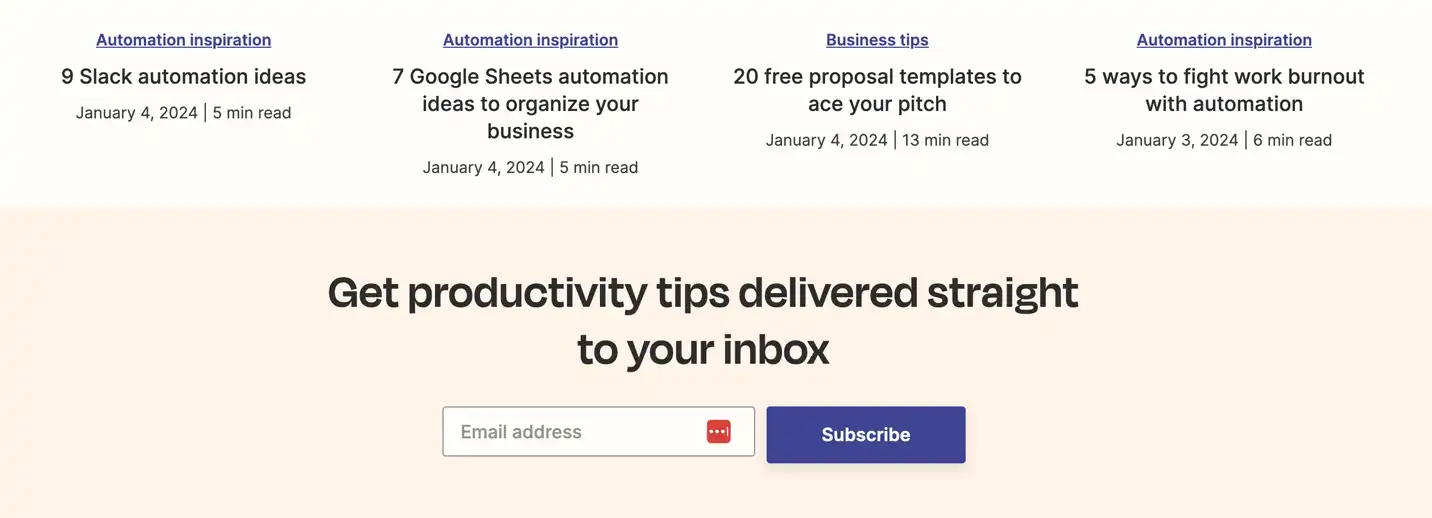
3. Leverage Product SMEs and Thought Leaders for Industry Trends and Insights
To create great content designed to drive traffic down the funnel, you should know your product like the back of your hand.
That starts by breaking down any communication silos between marketing and product teams. If you have an entire department of SMEs that have spent time perfecting your software, leverage their knowledge.
Hop into demos and casual interviews with members of your product team, running common product use case FAQs you’ve received throughout the sales cycle by them to gain valuable insights.
You can then communicate product details and use cases more impactfully to your audience through your content.
When producing BOFU product-focused content, consider asking a senior product team member to review the article and list them in the author byline to boost your site’s E-E-A-T.
At a higher level, you should know what’s going on in your industry. Follow thought leaders, whether individuals or organizations, on social media and subscribe to their newsletters for a steady flow of industry insights directly to your inbox.
You can also leverage trend tools like Exploding Topics and Google Trends to quickly spot what’s new in your industry and jump on it before your competitors do.
For example, consider AI — an extremely recent technological development, yet nearly every software now integrates AI in some capacity.
Closely monitor trends like this to be one of the first in your industry to implement new tech into your product and establish yourself as a thought leader in the space with your content.
4. Create Content for Your User Base, Not Just Your Buyer
Every brand needs to know its audience. But unlike e-commerce, where you (almost) always directly target the buyer with your messaging, B2B SaaS companies often need to take a different approach. The people using your software will rarely be the same ones making the purchase decision.
For example, if your main product is a CRM software, your user base is likely composed of salespeople using it for customer insights — not CMOs and other top-level decision-makers.
While targeting the decision-makers with content is still important, it’s best not to put all your eggs in one basket and neglect your actual users. These users are more accessible, more likely to consume your content, and can be product champions for the decision-makers.
Pro tip: Adjust your messaging and positioning based on your target audience.
For example, when targeting the user/product champion, a CRM software provider might produce tactical sales guides and other informational sales content while softly mentioning its CRM solution.
Provide them with a free trial to test the CRM’s features, and they may just share how awesome the software is with their boss, who then shares with the CMO.
Pipedrive’s Sales Pipeline Course eBook does a great job doing this.

When targeting the buyer, on the other hand, that same company would be wiser to publish BOFU content like CRM software comparisons, cost-related topics, implementation and ROI guides, etc.
Ultimately, B2B SaaS companies often have many hoops to jump through before they make a sale. Learn as much as you can about your customers via customer interviews, participation in online forums, and regular touchpoints with your sales team to determine how to best structure your conversion workflow.
Of course, B2C SaaS companies can also have longer, more complex sales cycles. While economical solutions like a simple note-taking app might not require as heavy a lift to acquire sign-ups and retain customers, a luxury product like Adobe Illustrator does.
5. Choose the Right Topics and Content Types

Good content is an investment, and you can’t afford to waste your resources on the things that don’t actively support your greater marketing and sales strategy.
That said, it’s important to be open-minded to the different types of content that can support that strategy. Let’s unpack a few content categories SaaS companies everywhere are leveraging to drive traffic, sign-ups, and upgrades.
Traffic-Driving TOFU Content
Don’t pass up on topics with high organic traffic and link potential just because they aren’t directly tied to your product.
Broad informational topics with high search volume (SV) might not exclusively drive qualified leads to your site, but there’s power in numbers. Assuming you rank for these queries, you can expect the influx of traffic to boost awareness of your brand and ultimately, albeit indirectly, produce conversions.
Here are a few examples of top-funnel content opportunities to consider targeting:
- Definitional queries
- “How to” guides
- “Tips” listicles
Take Drata, for example — their beginner’s guide to SOC 2 is one of the highest-trafficked pieces of content on the blog according to Ahrefs.
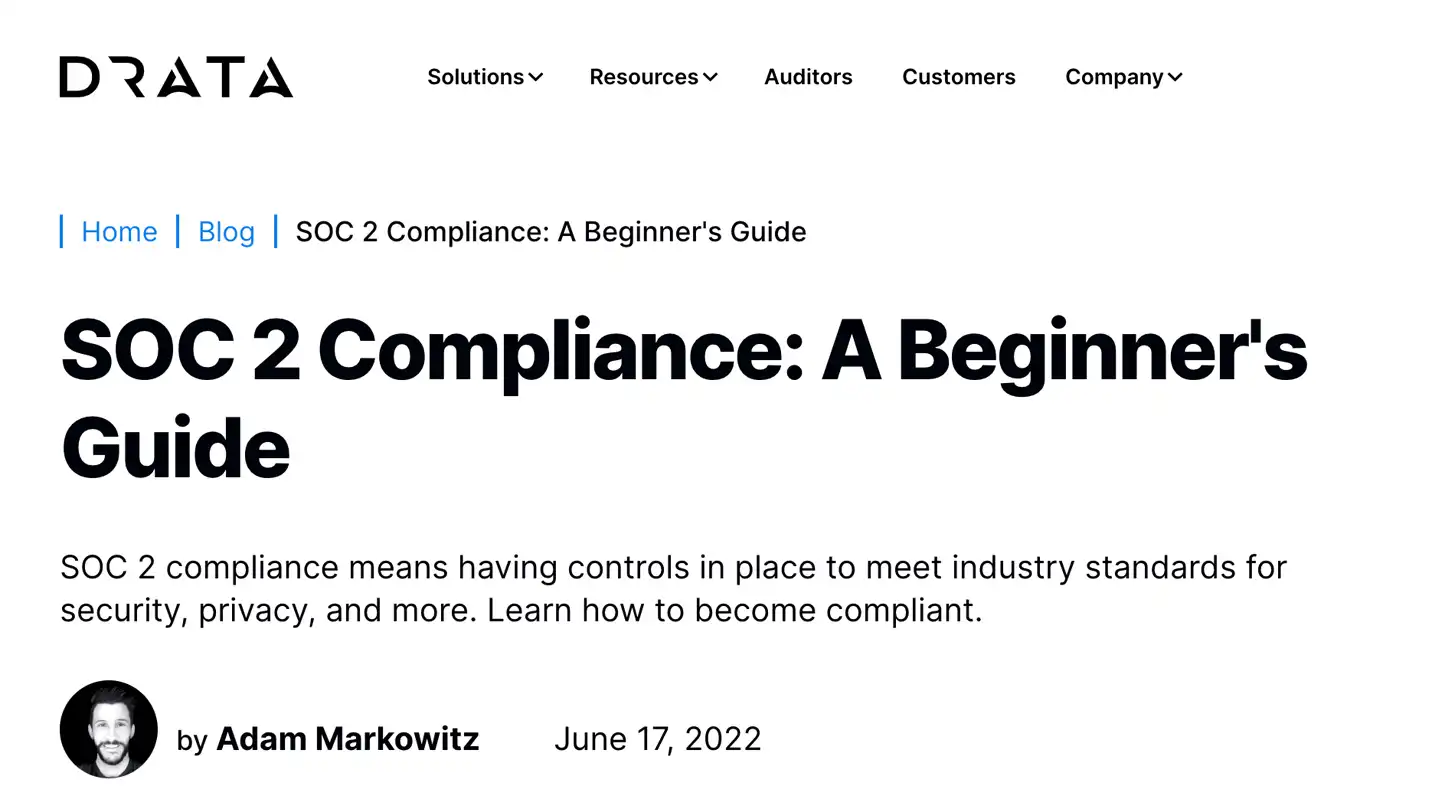
While more definitional and TOFU in nature, the post drives less familiar users down the funnel as they learn more about Drata’s offering — educating with high-quality content while building brand awareness.
All content you share should incorporate high-quality design assets, which holds particularly true for informational TOFU content that drives traffic.
Whether these assets include illustrated in-post images, infographics, photography, stock photos leveled up with illustrative overlays, or even just styled HTML elements, they can help keep your content engaging and make complex topics digestible.
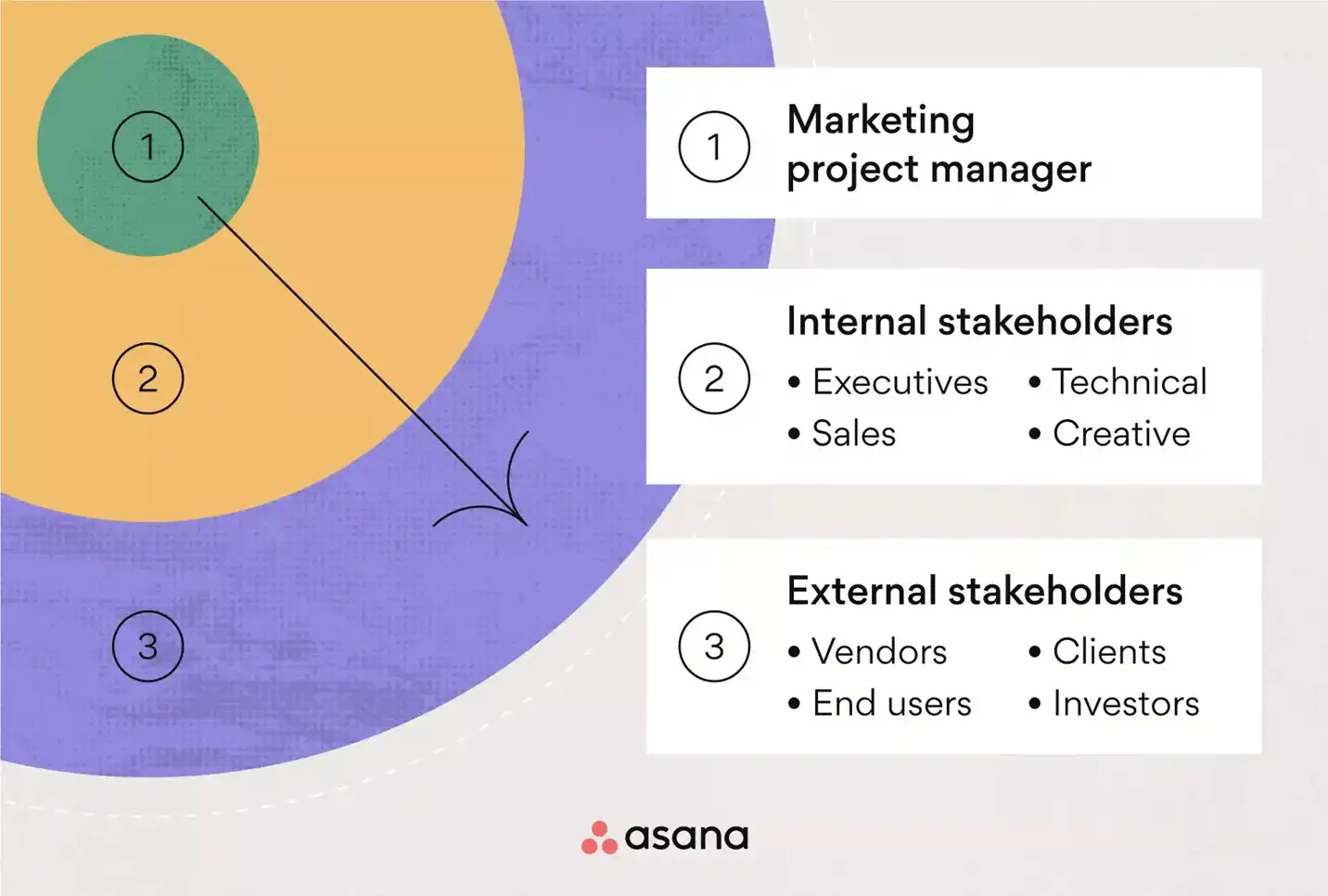
For example, Asana leverages its simple, abstract branded design style to demystify business topics.
Plus, with effective CTAs and internal linking, you can drive traffic down the funnel, which brings us to the next content format worth targeting.
Conversion-Focused BOFU Content
Bottom-funnel content is designed for users who are further along in their buyer journey, so naturally, it contributes to more conversions.
Nearly every major player in SaaS targets BOFU content, and you’ll likely find they mention what makes them better than you in that content. Stay competitive by capitalizing on the following formats:
- Buying guides: Think of buying guides like online product catalogs. They’re your opportunity to directly share what comes with your offerings or plans and walk leads through how to decide what’s best for them. They’re virtually as bottom-funnel as you can get from a content perspective.
- “Best” roundups: Pick a use case, any use case — as long as it makes your product a winner. For example, if your main offering is a workplace communication platform, you might create a roundup of “the best video conferencing solutions,” ranking yourself at the top. Pro tip: To come across as more fair, develop and present standardized criteria for rating these tools. Those criteria can favor your product’s differentiators, but aim for neutrality and let your product speak for itself.
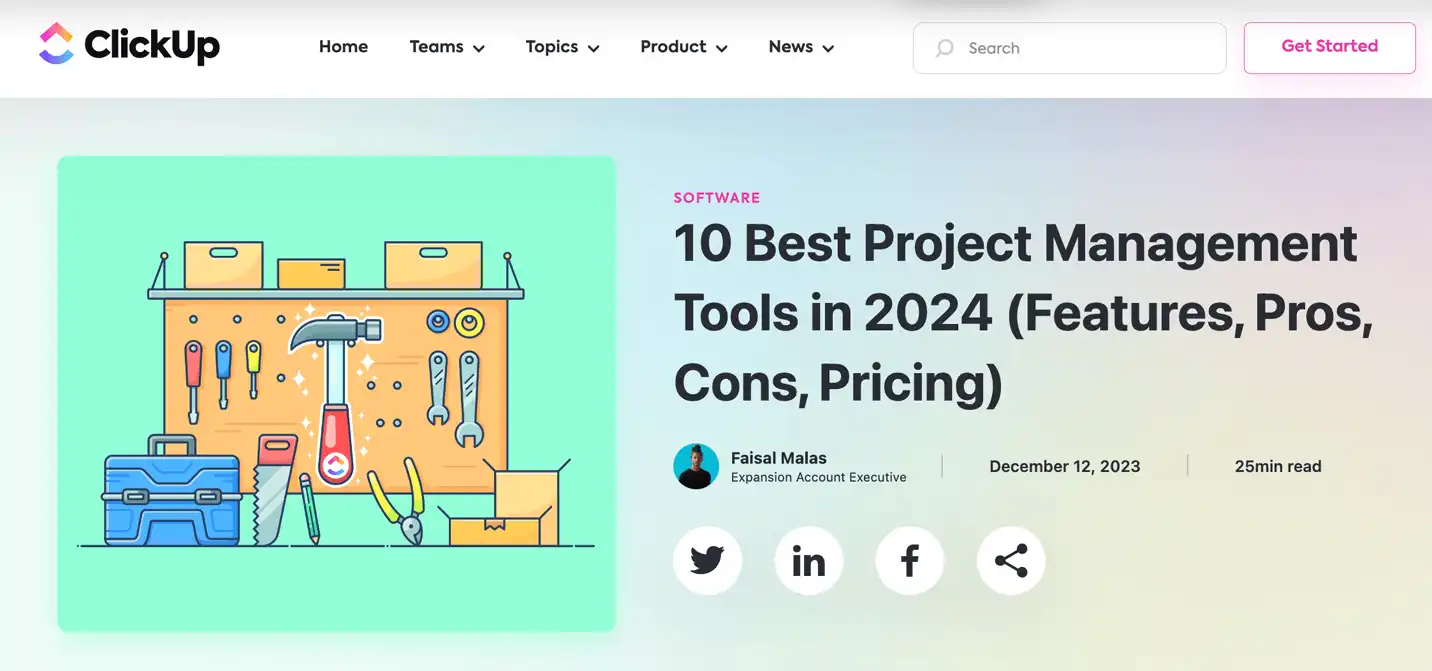
- “Alternatives” posts: If there’s a clear winner in your niche (and it’s not you), or if you’re among the best, there’s an opportunity to capitalize on “alternatives” posts. For example, if you’re an up-and-coming project management software provider, consider targeting “Asana alternatives” and positioning yourself as a worthy component.
- “Versus” pages: Similar to “alternatives” and “best” posts, “versus” pages can be an opportunity to directly compare yourself to a competitor, showcasing where you shine. Consider dedicating entire pages to “[Your Business] vs. [Competitor] content, especially if there’s search volume around these terms.
Don’t forget to update all BOFU content consistently — ideally every six months — to keep it fresh. Freshness matters a lot here, as competitors are always tweaking their products. What’s true about their product (and yours) this month might not be true next month, and you don’t want outdated or inaccurate information on your blog.
Thought Leadership Content
Nothing boosts your E-E-A-T and accumulates high-value organic backlinks like thought leadership content.
This is the stuff that takes you from a trustworthy source to an expert one. Explore content opportunities in your niche in the following formats:
- Trends reports: As a software company, you can access a lot of proprietary data — insights into the technology your product team uses, user data, and more. Share the wealth by compiling that data into an industry trends report. If you’re relatively new to the space, consider polling others in your industry or scraping data from credible sources. Zendesk’s CX trends report, for example, has accumulated over 74,000 backlinks according to Ahrefs.
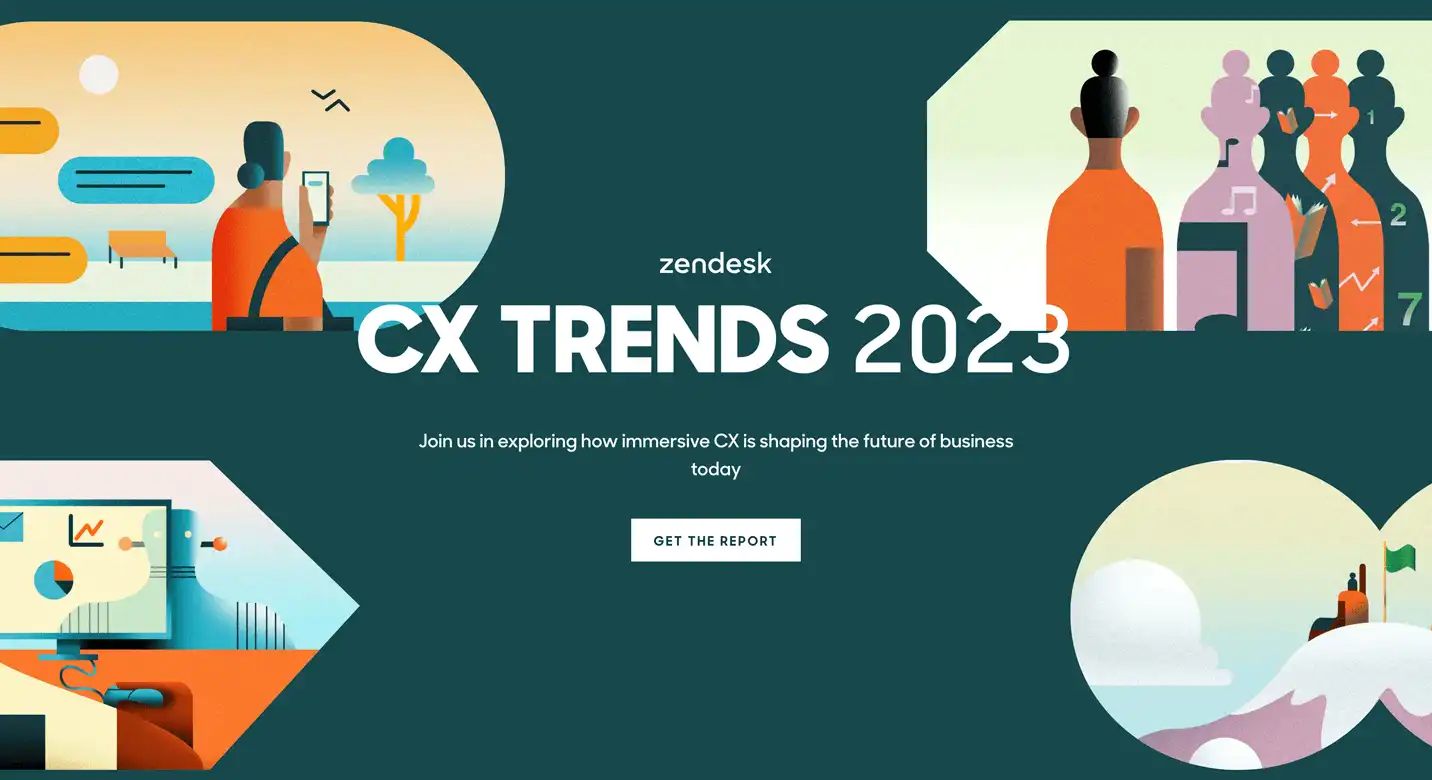
- Studies: Data studies pose an opportunity to get creative and dive into the minds of your customers. What headline-worthy questions within your industry do you feel confident you can answer? For example, let’s say you offer enterprise resource planning (ERP) software. You might ask “What percentage of enterprises suffer from extreme tool sprawl?” and use data from internal sources, surveys, and third-party databases to answer the question. Then, perhaps after a little manual outreach, sit back and watch news outlets eat it up.
- Podcasts: Not all SaaS content needs to be written or visual. Podcasts offer an opportunity to share unique takes on industry topics, engage with others in your industry, and build brand recognition. Aim to produce consistently, and consider writing blog copy to support and lend context to the podcast for improved visibility. For example, HubSpot offers a network of podcasts on marketing, professional development, and more.

Gated Freemium Content
We’ll preface this by saying that gated content isn’t for everyone. Depending on your strategy, you may only offer content across your blog and resource center that doesn’t require a user’s contact information to access.
But for those who do decide to pursue a gated asset lead acquisition strategy, consider producing and offering assets like eBooks, webinars, templates, and other downloadable content in exchange for your readers’ emails.
Generally, this content should be jam-packed with value — more than what a user could glean from an article on your blog — to warrant a personal information exchange. That said, some brands have been successful in gating most of the content they publish. Looking at you, TechTarget.

BOFU gated content can also directly funnel readers to your product.
For example, a project management software provider could target template keywords related to their use case and use those to direct readers to templates in the app itself, which naturally requires a sign-up.
Take Smartsheet, for example. The company targets keywords like “business plan templates” that prompt users to try in-app templates, boosting product sign-ups.
From there, they have their foot in the door to target free users via email newsletters and encourage plan upgrades.

6. Regularly Perform Competitor Gap and KOB Analyses
Before producing any content, you should perform a Keyword Opposition to Benefit (KOB) Analysis. This keyword research strategy helps you choose the topics you can rank for quickly while simultaneously delivering the most value from a ranking and traffic perspective.
When identifying keyword opportunities, the first place you should turn to is your competitors.
Using an SEO and content marketing tool like Ahrefs, dive into your competitors’ top pages or plug those competitors into the app’s Content Gap feature to see what topics they rank for that you don’t.
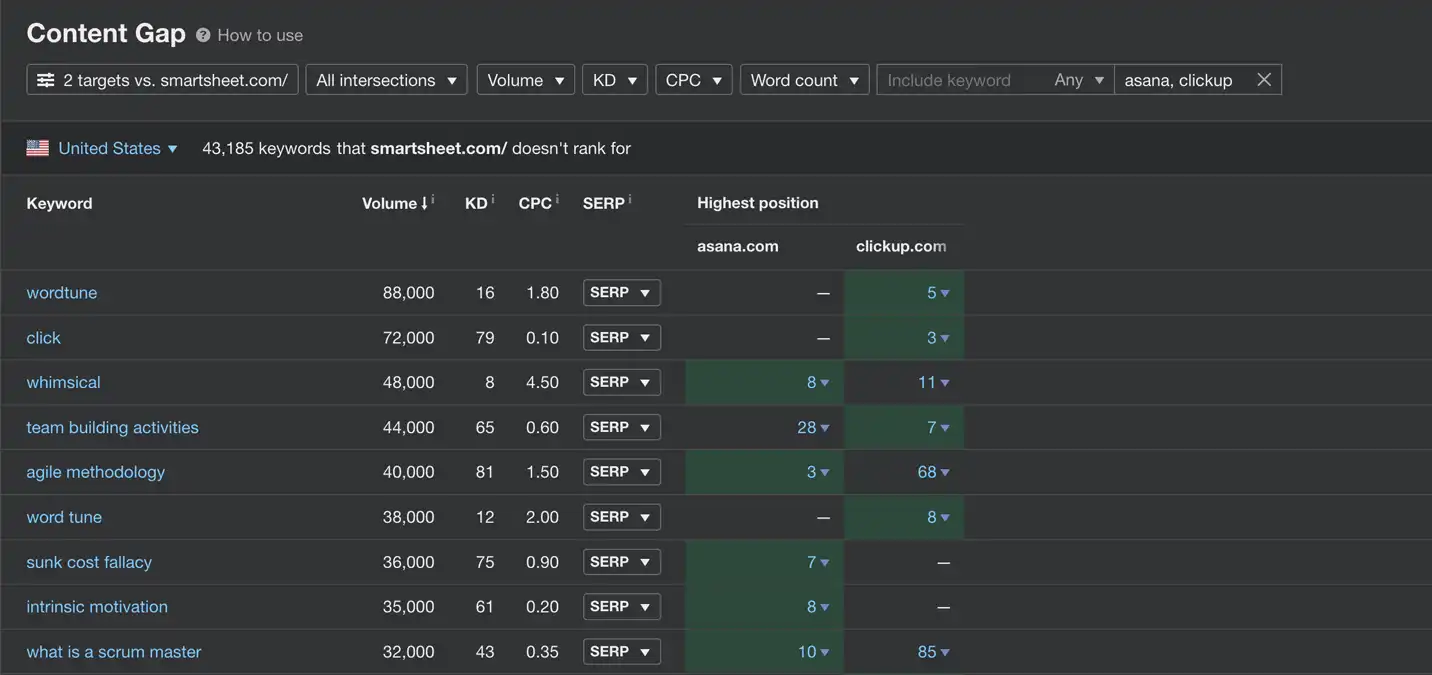
Pro tip: If you’re a B2B SaaS company, search volume (SV) and traffic value (TV) should not be your north star when brainstorming content.
Your sales cycle is long, and one sale could equate to upwards of $100k in revenue. Turn to highly relevant keywords your target audience will be searching, rather than putting all your eggs in one TOFU, high-SV basket.
That’s not to say high-SV content can’t support your strategy. But neglecting keywords with lower monthly SV (100 and under) that speak directly to your target persona(s) can cost you big in the long run.
7. Prioritize Freshness By Refreshing Existing Content
Regardless of industry, updating all content at least annually is a good rule of thumb. But this holds especially true in the SaaS space, where technology constantly evolves.
Track publish and last-updated dates in whatever project tracking software you use, and flag content approaching the 12-month mark for revamping.
As we hinted above, there’s an argument for an even more aggressive content update cadence for BOFU content. Aim for bi-annual, if not more frequent, updates to ensure product and competitor information remains accurate and fresh.
When updating content, also ensure that content displays the last-updated date instead of the original publish date. Otherwise, Google may see your content as less fresh than it is, harming rankings.
Pro tip: Don’t include the original publication date and the last updated date.
You may be tempted to include both for total transparency, but this case study from Ross Hudgens demonstrates that doing so can confuse Google and harm rankings.
8. “Save” Your SaaS Content With the SAVE Framework

SaaS content isn’t lifestyle content.
As fun as it can be to inject flowery language into a piece of content, that’s not what SaaS readers are looking for. They’re looking for substance.
The next time you write a piece of SaaS content, put yourself in your audience’s shoes and keep the SAVE framework in mind.
- Specificity: It isn’t enough to advise your audience to “develop a good product.” Describe what goes into good product development — a unique value proposition, a target audience, etc. Then, provide probing questions to get their gears turning.
- Actionability: Your audience should be able to take your content and run with it. That means telling readers what the next steps should look like. Try adding “takeaway” and “pro tip” callouts throughout informational content that the reader can add to their notes. Here’s a pro tip for you: Provide real-life examples of how you’d apply your advice in a business context to make it stick.
- Value: If you’re accustomed to making your content mirror what’s ranking on the SERP almost exactly, it’s time to change your approach. Use the SERP as a starting point — not a map. Turn to other sources like internal SMEs, proprietary data, experts in your industry, industry eBooks and whitepapers, more niche and granular SERPs, and even forums like Reddit threads to deliver value that other ranking posts lack. This boosts your E-E-A-T in Google’s eyes and your readers’ eyes alike.
- Explicitness: Be clear and direct in your writing, not leaving anything up for interpretation. If a reader could perceive a term as vague — define it! For example, you shouldn’t drop terms like “information systems” or “enterprise marketing” without demystifying them for the reader. Again, when in doubt, use examples.
Did we make this acronym up? Perhaps. But does it hold true based on nearly all of the top-ranking content in the SaaS space? 100%.
9. Develop a Content Voice That Stands Out
SaaS content may have a reputation for being dry and boring, but yours doesn’t have to be. Break the mold by developing a brand voice that’s engaging and unique.
Once again, take Zapier. The brand’s voice is conversational, empathetic, humorous, and very transparent. It helps that the writer’s name (as opposed to “Zapier”) appears in the author byline and writers leverage a first-person voice throughout.
This authentic style also enables the brand to naturally demystify complex topics on a human-to-human level.

Pro tip:
Create author bio pages for authors with credibility or credentials worth sharing, boosting your E-E-A-T and adding a human touch to your content.
Siege the SaaS Content Marketing Fortress
SaaS content marketing may feel like a beast at first, but with the support of one of the best SaaS content marketing agencies, you’ll have a winning strategy in no time.
With our dedicated team of 50+ in-house marketers, there isn’t a challenge we can’t rise to.
Learn more about what Siege can do for your SaaS brand today.




